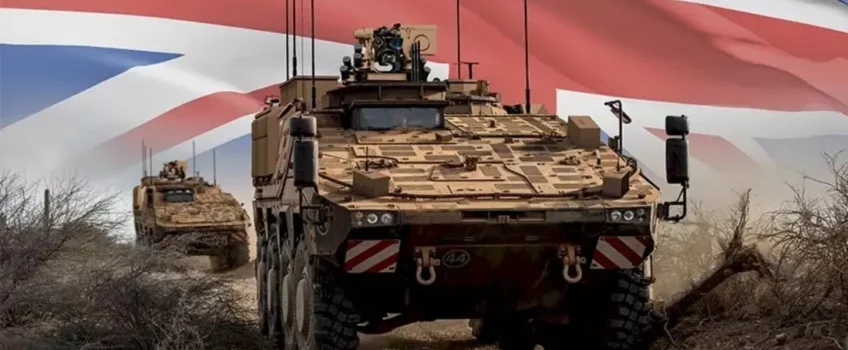
The British Army has ushered in a new era of armoured vehicle technology as they embark on extensive trials for the cutting-edge Boxer armoured vehicle, which sets a new standard for armoured fighting vehicles (AFVs). Designed with flexibility, robustness, and mission adaptability in mind, the Boxer can operate in diverse terrain, under various combat situations. The ability to transport troops, serve as a command vehicle, an ambulance, or even a cargo carrier underlines its multipurpose potential.
Trials: Comprehensive Assessment of Capabilities
The trial phase for the Boxer is a rigorous and comprehensive assessment of its capabilities. It is a thorough evaluation of its performance in diverse conditions, from navigating rugged terrains to withstanding hostile environments.
Terrain Navigation
The Boxer’s design enables it to tackle various terrains, from undulating landscapes to rugged, off-road conditions. The trials include a series of obstacle courses designed to test the Boxer’s ground clearance, stability, and traction.
Combat Resilience
The trials aren’t just about manoeuvrability. They also measure the Boxer’s resilience in combat scenarios. This involves tests for bulletproof resistance, shock absorption from explosions, and even its ability to function after taking significant damage.
Manufacturing Excellence Of The Boxer Armoured Vehicle
oxer armoured vehicles are a symbol of manufacturing excellence, a testament to the hard work, expertise, and technological innovation of its makers. From the modular design to the armoured hull, every aspect of the Boxer is meticulously crafted to meet the stringent demands of the battlefield.
Modular Design
The Boxer’s modular design is what sets it apart from traditional AFVs. This innovative feature allows for quick role configuration, tailored to the mission’s requirements. This reduces downtime and enhances operational readiness.
Armoured Hull
The hull is the Boxer’s defensive backbone. Made from specially designed armour, it protects occupants from bullets, shrapnel, and explosive blasts. The hull’s integrity is paramount, and it’s being subjected to stringent tests to ensure it meets the high standards of protection.
Weapons Systems
The Specialist Carrier variant of the Boxer armoured vehicles will seamlessly integrate with existing weapon systems, including heavy machine guns, general-purpose machine guns (GPMG), grenade machine guns (GMG), and the Javelin anti-tank guided weapon station.
Boxer Armoured Vehicle Origins
In 2018, the UK rejoined the Organisation for Joint Armament Cooperation’s Boxer program, with a plan to modernise the Army’s vehicle fleet with 8×8 troop carriers. The Defense Secretary announced a £2.8 billion contract for the Mechanised Infantry Vehicle (MIV) program in 2019, adding around 500 Boxer vehicles to the Army’s Strike brigades.
Additional acquisitions were made in 2022, raising the total number of Boxer vehicles to 623. The same year, Rolls-Royce Solutions UK was selected to supply their MTU engine for these vehicles. The manufacturing of the Boxer is led by the ARTEC consortium, with Rheinmetall owning the majority 64% stake.
Concluding Thoughts: The Future of Armoured Vehicles
The modular, advanced Boxer armoured vehicle will be incorporated into the Army’s battalions within the Armored Brigade Combat Teams. They have been specifically designed for swift deployment over long distances and effective operations across diverse terrains.
The Boxer’s production is a testament to international collaboration and manufacturing prowess. The ARTEC consortium, a joint venture consisting of Rheinmetall MAN Military Vehicles (RMMV) and German defence contractor Krauss-Maffei Wegmann (KMW), is at the helm of the Boxer’s manufacturing process. Dominated by Rheinmetall with a 64% share, this bi-national program epitomises the synergistic spirit of defence production.
The Boxer armoured vehicle represents a significant leap in armoured vehicle technology, reflecting the British Army’s commitment to innovation and adaptability. These trials will pave the way for the future, ushering in an era of superior mobility, robust protection, and adaptable functionality that will redefine our understanding of what an armoured vehicle can be.


 Mail:
Mail: 



